Best Fabrics for Summer Clothing: Your Ultimate Guide for 2025
Summer season clothes play a crucial role in maintaining our comfort and health during hot weather. As temperatures soar, the fabrics we wear directly impact how we feel, making your seasonal wardrobe choices more important than you might realize.
Styling Tips for Hot Weather Comfort
Beyond fabric choice, how you wear your clothes also matters. Opt for:
- Loose-fitting garments: They allow better airflow and reduce friction.
- Light-colored pieces: These reflect sunlight instead of absorbing it.
- Minimal layering: Less is more when it comes to beating the heat.
Combining these tips with the Best Fabrics for Summer Clothing ensures both comfort and style.
Balancing Style and Function
As a stylist, I always recommend that clients focus on versatile, breathable wardrobe pieces. Choosing the Best Fabrics for Summer Clothing not only keeps you cool but also opens up endless possibilities for chic, effortless summer looks.
Understanding the Role of Fabric in Summer Clothing
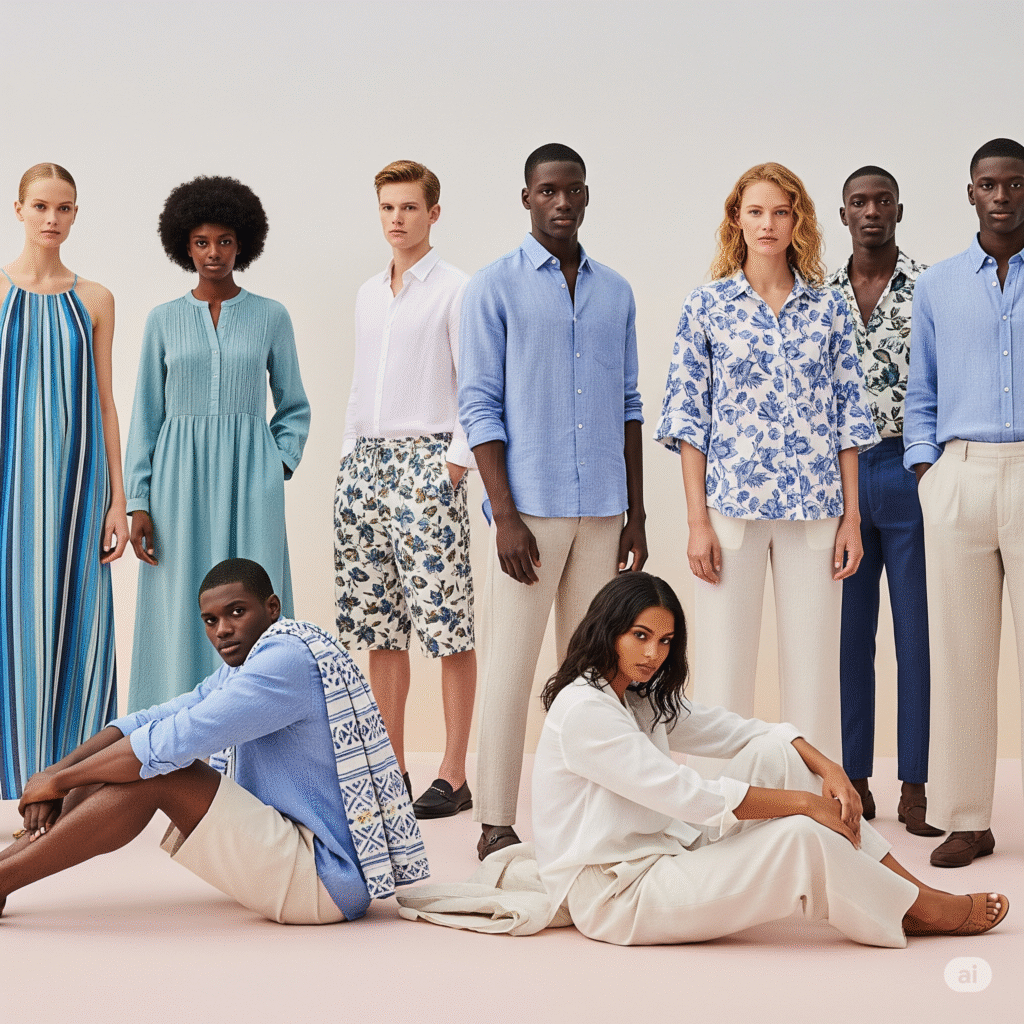
The fabric of your clothing serves as your body’s primary climate control system in summer. Fabric choice affects not just style, but fundamentally impacts how comfortable you’ll feel throughout the day. Let’s explore why certain materials outperform others when temperatures rise.
Why breathable fabrics matter
Breathable fabrics allow air circulation between your skin and the environment, creating a crucial cooling effect. In hot weather, we sweat naturally—this is our body’s cooling mechanism. Breathable fabrics support this process by permitting air movement that helps sweat evaporate efficiently.
Most natural fabrics have a porous structure that enables air passage. This ventilation prevents the uncomfortable sensation of being wrapped in heat-trapping layers. Consequently, breathable fabrics help regulate your body temperature and prevent overheating that can lead to irritation and discomfort.
Which fabric is best for summer: cotton, linen, rayon
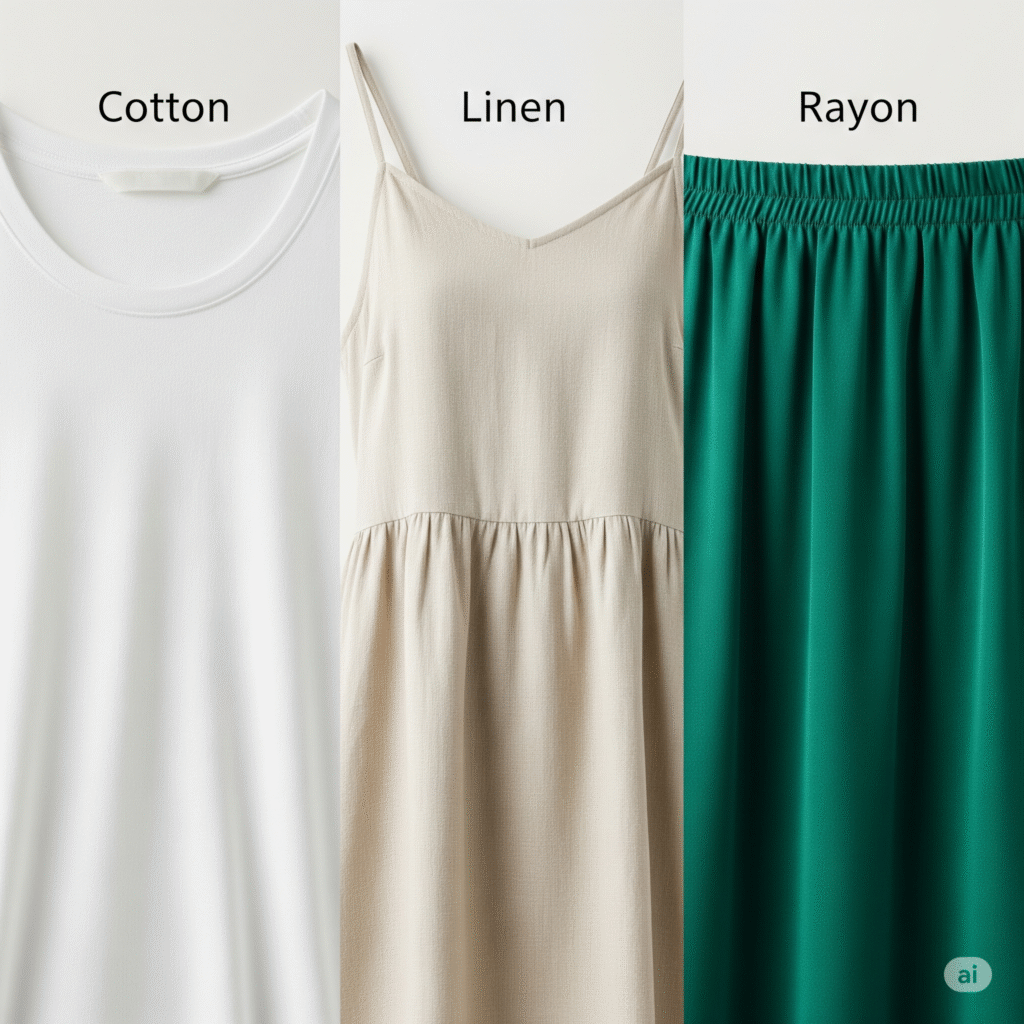
Cotton remains a classic summer staple because it’s soft, lightweight, and highly breathable. It excels at absorbing moisture—up to 25% of its weight—keeping you dry throughout hot days. Egyptian and organic cotton varieties offer even greater softness and breathability for premium comfort, making cotton one of the Best Fabrics for Summer Clothing year after year.
Linen, derived from flax plant stalks, outperforms cotton in several ways. It absorbs moisture up to 20% of its weight while still feeling dry, and its superior moisture-wicking properties pull sweat away from the skin more effectively than cotton. Its hollow fibers make it exceptionally cool to wear, and with three times the strength of cotton, linen stands out as one of the Best Fabrics for Summer Clothing in terms of both durability and comfort.
Rayon presents a middle ground between natural and synthetic options. Made from processed plant fibers, rayon features thin filaments that enhance breathability. Its silky texture drapes beautifully while maintaining excellent moisture absorption properties. When it comes to stylish comfort, rayon earns its place among the Best Fabrics for Summer Clothing, especially in pieces like dresses and flowing tops.
Choosing the Best Fabrics for Summer Clothing means not just following trends but also investing in comfort, breathability, and versatility. Whether you’re selecting casual cotton tees, structured linen pants, or chic rayon maxi dresses, your fabric decisions can transform how you experience the season.
Ultimately, cotton, linen, and rayon lead the list of Best Fabrics for Summer Clothing, offering a smart blend of style and functionality that’s perfect for 2025’s warm-weather wardrobe.
Is polyester good for summer?
Polyester has traditionally been avoided for hot weather due to its synthetic nature. However, modern polyester has evolved significantly. The fabric now often features mesh construction with larger air gaps between yarns, allowing better airflow. Specially designed polyester clothing can wick moisture efficiently, pulling sweat from skin to fabric surface where it evaporates quickly.
A notable benefit of polyester is its UV protection—3 to 4 times better than cotton since polyester reflects radiation rather than absorbing it. Essentially, your choice depends on the specific polyester construction and your activity level.
How fabric affects sweat and comfort
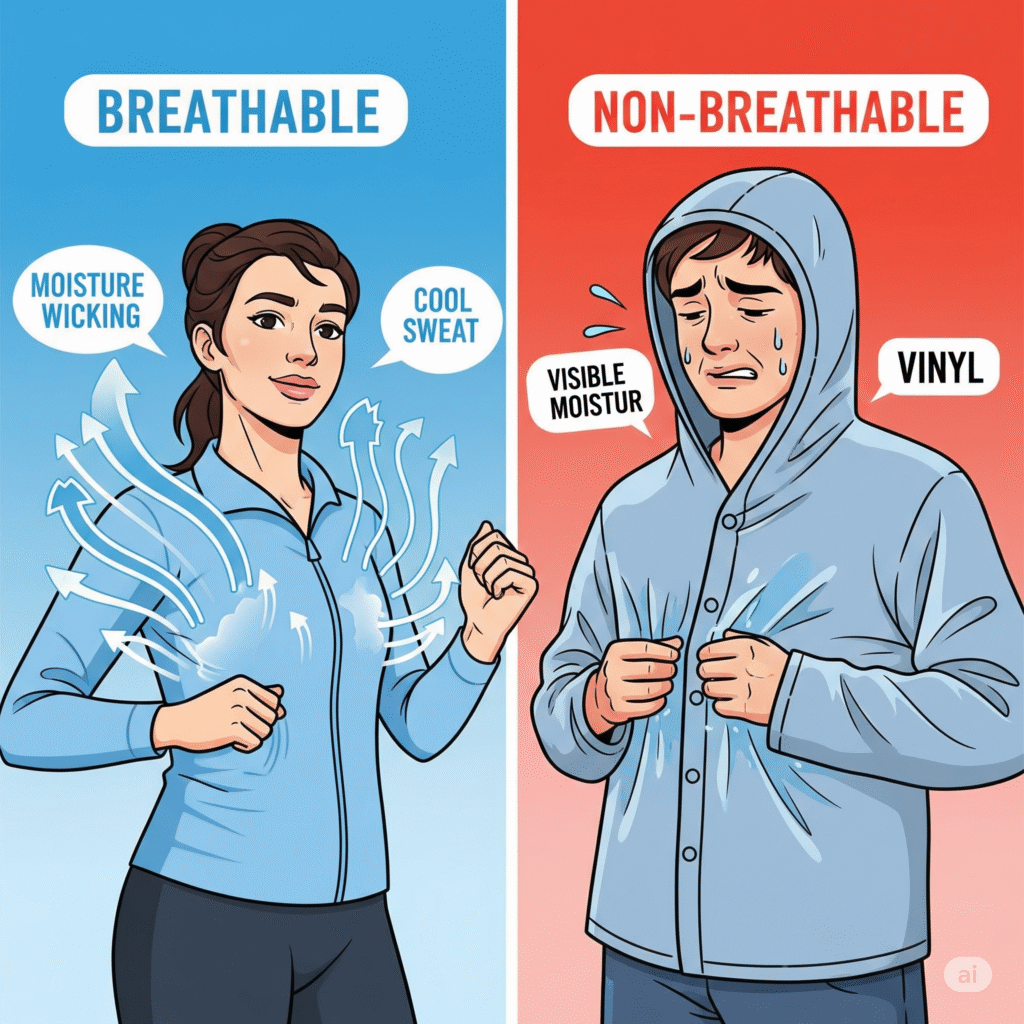
The way fabric interacts with sweat dramatically impacts your comfort, especially in warm weather. Natural fibers like cotton and linen are hydrophilic—they love water. Their cellulose molecules contain hydroxyl groups that attract moisture, dispersing it across the fabric for faster evaporation. This is one of the key reasons why cotton and linen consistently rank among the Best Fabrics for Summer Clothing.
Conversely, most synthetic fabrics are hydrophobic—they repel water. Without proper engineering, these fabrics can trap sweat against the skin, creating discomfort and irritation. However, modern performance synthetics are designed to wick moisture efficiently, making them contenders in the category of Best Fabrics for Summer Clothing for activewear and athleisure.
For maximum summer comfort, it’s important to consider not just the type of fabric but also its weave. Loosely woven fabrics made with thinner materials naturally enhance airflow and allow heat to escape more easily. These airy constructions are typical of the Best Fabrics for Summer Clothing, which prioritize breathability alongside moisture management.
Here’s a quick tip from a stylist’s perspective: hold the fabric up to the light. The more light that passes through, the more breathable the fabric likely is—a quick and easy way to identify the Best Fabrics for Summer Clothing when shopping or styling for the season.
Choosing the Right Style for Hot Weather
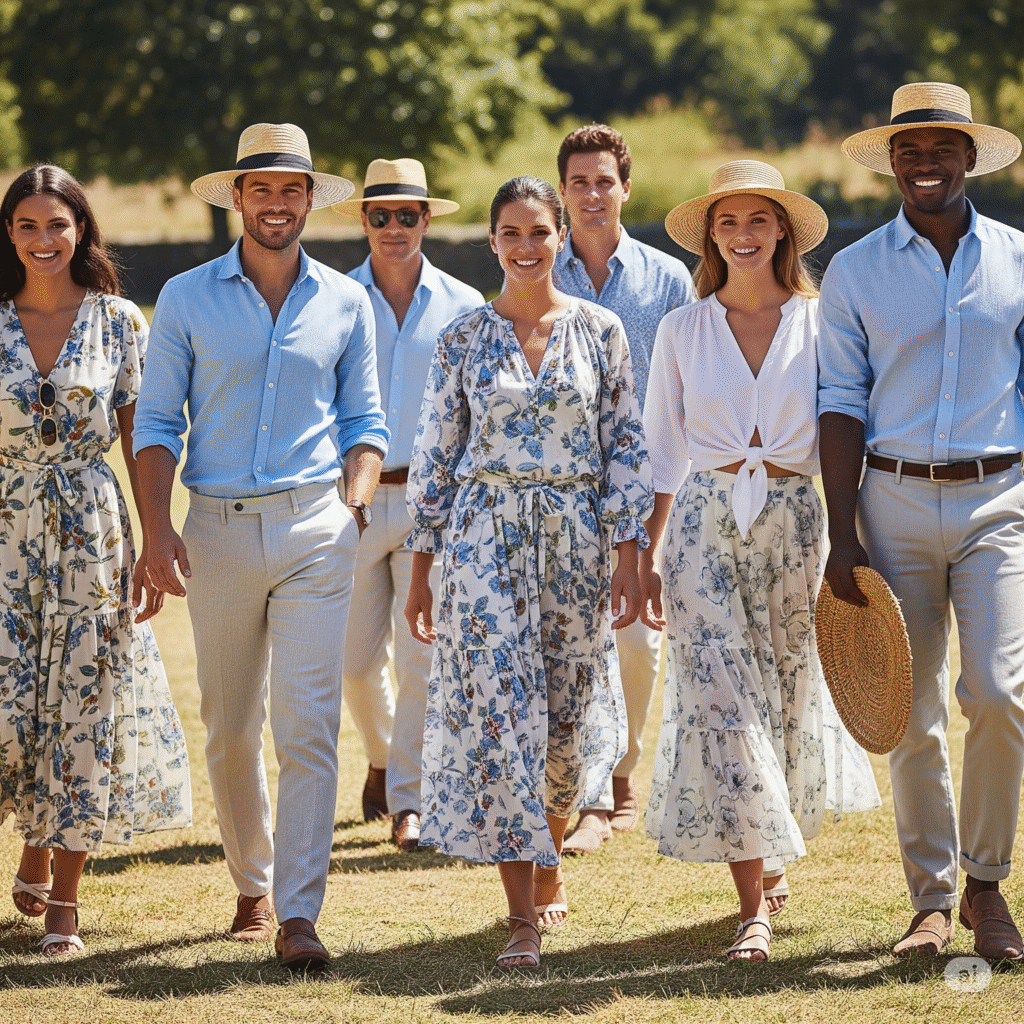
Beyond fabric selection, the style and cut of your summer season clothes dramatically affect your comfort in hot weather. The right style choices can keep you cool even when temperatures soar.
if you want styling tips for summer wear so kurti is best option so we have guide modern kurti with jeans which can help you to make your fashion style high this summer .
Loose vs. tight: what works best
Loose-fitting clothing creates physical separation between fabric and skin, allowing precious airflow that helps sweat evaporate more efficiently. Tight garments trap sweat against your body, preventing proper evaporation and increasing discomfort. For most summer situations, I recommend choosing woven fabrics with some texture (like seersucker or pique) that naturally lift away from skin instead of clinging.
Interestingly, there’s an exception to this rule. Technical fabrics specifically designed for athletic wear often work better in tight-fitting styles because they’re engineered to wick moisture away from your body. Look for terms like “sweat-wicking” or “quick-dry” on labels if you prefer more fitted styles.
you can style kurti with jeans , it look outstanding with kurti also so if have to try here we a guide for you Stylish Modern Kurti With Jeans so you can find which looks better on you .
Sleeveless and short-sleeved options
Sleeveless clothing maximizes ventilation around your arms and underarms—areas where we tend to sweat heavily. They’re not just cooler; they’re also typically lighter in weight, creating that “feather-light” feeling ideal for scorching days. Short-sleeved options strike a balance between ventilation and protection, offering freedom of movement while partially shielding arms from direct sun.
For formal occasions, consider lightweight linen shirts or cotton-blend short-sleeved tops that maintain a polished look without sacrificing comfort. T-shirt dresses and oversized suits paired with simple tees offer elegance with breathability.
UV-resistant clothing: when and why to wear it
UV-protective clothing has become increasingly important as we understand sun damage better. These garments are rated with UPF (Ultraviolet Protection Factor) numbers indicating how effectively they block harmful rays. A UPF 50+ rating blocks 98% of UV radiation, whereas standard cotton only provides approximately UPF 5 protection.
I suggest investing in UV-resistant clothing primarily for extended outdoor activities. Look for:
- Looser cuts (tight stretching reduces effectiveness)
- Quick-drying fabrics (wetness decreases UPF rating)
- Higher coverage designs with collars and longer sleeves
Remember that even with UV-protective clothing, you’ll still need sunscreen for exposed areas like face and hands.
Color and Design Tips for Summer Outfits
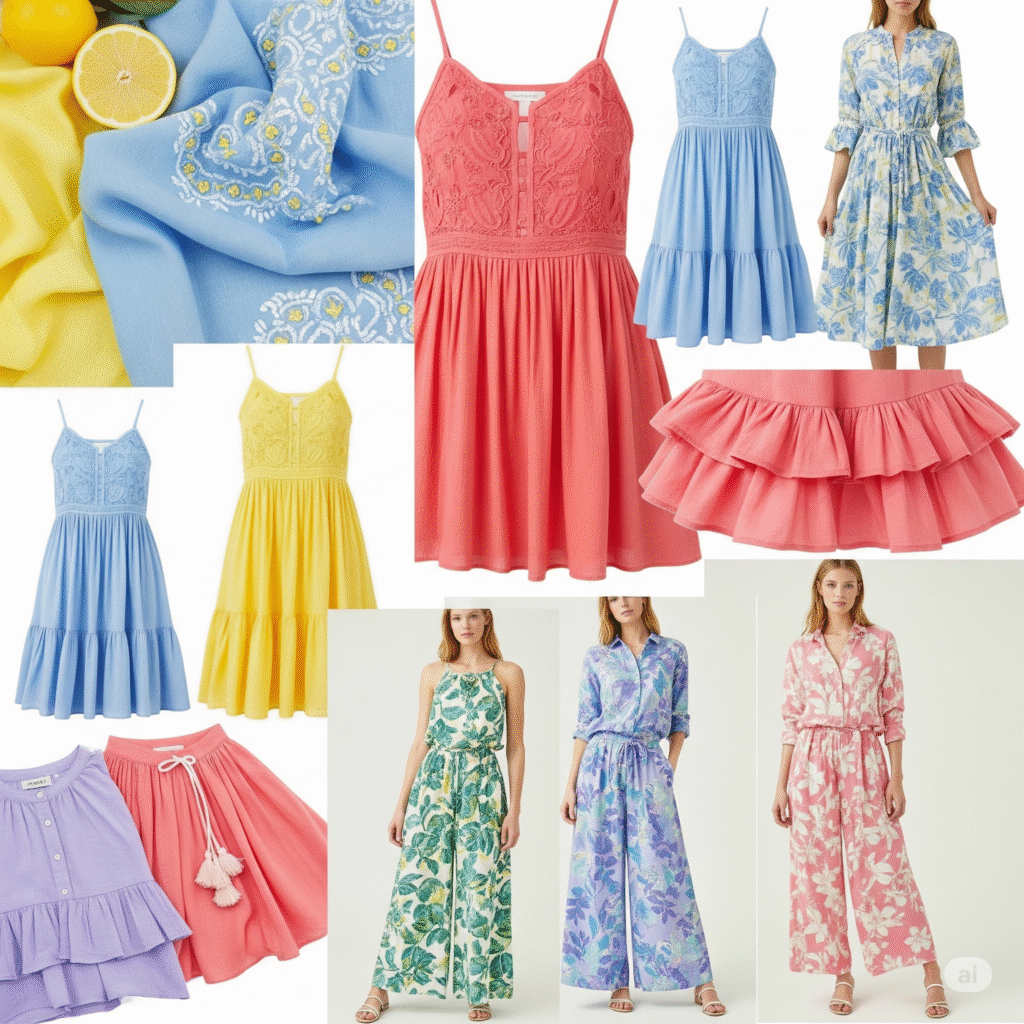
Color serves as more than just an esthetic choice in your summer wardrobe—it affects how comfortable you’ll feel when temperatures rise. The right color palette can make a noticeable difference in staying cool throughout the season.
Why light colors are better in summer
Light colors reflect sunlight instead of absorbing it, which helps maintain a cooler body temperature. This reflective property makes white clothing feel noticeably cooler than darker shades in direct sunlight. According to scientific principles, this effect is known as the albedo effect—light-colored surfaces have a higher albedo, meaning they bounce more sunlight away and absorb less heat.
Beyond white, several other light shades excel at keeping you cool:
- Light blue evokes feelings of calmness while reflecting sunlight
- Pale yellow brings sunshine vibes without absorbing excessive heat
- Mint green feels refreshing and airy while complementing various skin tones
- Light gray offers a sophisticated alternative to white
- Soft pink adds feminine charm while still reflecting heat
Dark colors trap heat against your body, making them significantly less comfortable for hot days. Even in urban environments with limited shade, lighter colors help you stay cooler while navigating city streets.
Popular summer season clothes name and styles
For 2025, several trending styles are gaining momentum in summer fashion:
Tank tops remain versatile summer staples that can be styled numerous ways—layer with jackets or pair with midi skirts for elegant looks. For elevated style, accessorize with statement necklaces or gold jewelry.
Flowy kaftan dresses provide excellent airflow and comfort in high temperatures. Whether you prefer long flowing designs or shorter options, they work perfectly for casual settings.
Graphic shirts with quirky messages or bold patterns make impact statements. Pair with palazzo pants or flared jeans for a chic look that feels vacation-ready.
Pastel tunics serve as wardrobe must-haves—super stylish yet comfortable. They transition seamlessly from morning coffee runs to late-night outings.
How to mix comfort with fashion
Balancing style with hot-weather practicality doesn’t require compromise. Indeed, many designers now focus on quality and cut over excessive embellishments, creating refined basics that look effortlessly stylish.
Experiment with vibrant colors to instantly lift your mood—pinks, yellows, and turquoise can add playful touches to outfits. For those hesitant about all-over bright colors, incorporate small pops through accessories.
Powder pink has emerged as 2025’s most compelling color story according to trend experts. This isn’t merely another pastel revival but represents a sophisticated approach to softness as strength.
At the same time, invest in versatile basics like a white t-shirt, classic denim shorts, or a simple sundress that can be mixed and matched. When shopping for basics, look for high-quality, durable pieces that withstand summer wear and tear.
What to Avoid When Dressing for Summer
Knowing what not to wear can be just as important as knowing what to wear during hot weather. Making the wrong choices with summer season clothes can turn even a pleasant day into an uncomfortable experience. Let’s explore the elements you should avoid to stay cool when temperatures rise.
Dark colors and their heat-trapping effect
Dark colors absorb all wavelengths of light and convert them into heat, making them significantly warmer than lighter-colored clothing. This scientific principle, known as albedo, measures how reflective a surface is—black ranks at zero (least reflective) while white approaches one (highly reflective). Consequently, dark clothing can make you feel noticeably hotter under direct sunlight.
The heat absorption isn’t just theoretical—dark clothing can become 20-30 degrees hotter than the actual air temperature. Though black offers sophistication and elegance, it works against you during summer by attracting heat and, surprisingly, even mosquitoes! In tropical or humid environments, dark fabrics retain more sweat and feel heavier throughout the day.
Synthetic fabrics that reduce breathability
Synthetic fabrics are among summer’s worst offenders. Polyester, despite improvements in recent years, still repels moisture rather than absorbing it, leaving sweat trapped against your skin. One fashion expert aptly described wearing polyester in summer as “trying to function while wearing a plastic bag”—uncomfortable and unhealthy.
Other synthetics to avoid include:
- Nylon (designed to repel water, completely non-breathable)
- Acrylic (traps heat between fabric and skin)
- Silk (not as absorbent as cotton, leaves sweat patches)
- Velvet (thick, heavy, and gets warmer over time)
These materials can cause more than discomfort—synthetic fabrics trap heat and moisture, potentially leading to skin rashes, allergies, and fungal infections in those with sensitive skin.
Tight fits that cause discomfort
Tight-fitting clothes restrict airflow between your skin and the environment, creating what some experts call a “sauna effect.” Without proper ventilation, sweat cannot evaporate effectively, leaving you feeling sticky and uncomfortable throughout the day.
Beyond basic discomfort, overly tight summer season clothes can cause more serious issues. Dermatologists report that tight denim and synthetic apparel cause fungal infections, ringworm, and allergic rashes in many patients during summer months. The combination of tight fabric, heat, and humidity creates perfect conditions for skin problems like folliculitis, where hair follicles become inflamed and infected.
For healthy summer dressing, prioritize loose, breathable natural fabrics in light colors—your skin will thank you.
Conclusion
As we’ve explored throughout this guide, choosing the right summer season clothes goes far beyond mere fashion preferences. Breathable natural materials like cotton, linen, and rayon—widely recognized as the Best Fabrics for Summer Clothing—should form the foundation of your warm-weather wardrobe. These fabrics work with your body’s natural cooling mechanisms rather than against them, helping regulate temperature and manage sweat effectively.
Additionally, loose-fitting styles enhance ventilation and promote air circulation, allowing sweat to evaporate more efficiently. When paired with the Best Fabrics for Summer Clothing, such silhouettes create a powerful combination for staying cool and comfortable.
Light colors undoubtedly make a significant difference in summer comfort. While dark shades absorb heat, lighter options reflect sunlight and help keep you cooler throughout the day. This simple yet strategic choice complements the Best Fabrics for Summer Clothing, making whites, pastels, and soft neutrals essential for building a stylish and functional summer wardrobe.
To enhance your look in summer you have to add some accessories if you want to know what so there is a guide Best Accessories Wear with Jeans by which you can look elegant .
Remember that what you avoid wearing matters just as much as what you choose. Tight synthetic fabrics trap heat and moisture against your skin, potentially causing discomfort and even skin issues. Therefore, save your polyester, nylon, and other non-breathable fabrics for cooler seasons.
Summer fashion for 2025 offers plenty of stylish options that don’t sacrifice comfort. Tank tops, kaftan dresses, graphic shirts, and pastel tunics provide versatile foundations for countless outfit combinations. The season’s powder pink trend delivers sophistication while maintaining the light color palette ideal for hot weather.
Above all, your summer wardrobe should serve you well during the hottest months. Quality fabrics that breathe, styles that allow movement, and colors that reflect rather than absorb heat will keep you comfortable regardless of rising temperatures. With these guidelines, you’ll navigate summer 2025 with both style and comfort, ready for whatever the season brings.
